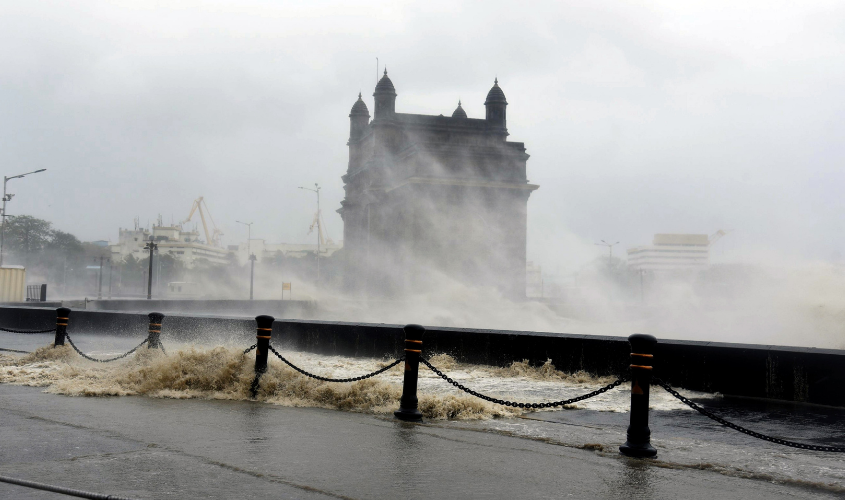Sindhudurg (Konkan): Having braved the Mumbai floods in 2005, I thought I had seen it all—until Cyclone Tauktae happened. A Mumbaikar to the core, the lockdown together with the “the work-from-home” syndrome had given me an opportunity to “escape” city life to find contentment in my hometown Konkan. Here, juggling work over the internet, I had immersed myself in setting up a project for artists and writers in the picturesque and idyllic Ronapal, a small (and one of the last) hamlet located on the border of the states of Maharashtra and Goa. Little did I know that this nondescript village comprising a little more than 200 houses and many cashew and mango trees would face nature’s wrath in such a cruel manner. Hours before the arrival of Cyclone Tauktae, a gentle breeze running across the village in short breaks had transformed itself into a mass of heavy wind and rain. The night before the cyclone hit, the unbearable heat that had beaten the land and its people since the beginning of summer had started to die down. Around midnight, the arrival of fireflies in the lush paddy fields reminded of a scene from Van Gogh’s painting “The Starry Night”. The glittering “mini lights” accompanied by the soothing breeze did give an indication of heavy rains on its way. While I was trying to read the signs of nature, my 16-year-old teenage daughter (who too had joined me in my adventurous break) preferred tracking the cyclone live on her phone via the internet, which incidentally was too slow (as most internet connections in rural India are). Around 10 pm that night, the electricity went off. It was at 3.30 am, that we were woken up by a loud noise of the rain banging on all sides of the house and within minutes our bedroom began to flood with rain water that had begun pouring in from the windows. We shifted ourselves to another bedroom with our two 8-month-old Labradors and within an hour, the second bedroom too was flooded. The windows and doors of our newly set up residence was no match for the rains whose intensity seemed to grow stronger by every minute.
My daughter, I, along and my 68-year-old family member, who too was staying with us that night, were feverishly trying to use all our strengths to pour out all the water not only from our bedrooms, but also from our kitchen and hallway. Our living room too was flooded and finally drenched, tired and exhausted, we gave up and parked ourselves in the porch waiting for the rain to subside. Since our house was located in the midst of paddy fields, away from immediate civilization, it was impossible to call anyone for help. The few houses that were within our view too appeared to be lashed by the pouring rain that refused to die down. At around 8 am, we were presented with a sight that took our breath away. Barely at a distance of 600 metres, we saw the cyclone approaching.
At one moment it looked fast, at another, it seemed to slow down and halt. The weather became extremely cold and windy. The cyclone seemed to have a mind of its own. It appeared to lash out at everything on its path—uprooting the cashew and mango orchards, turning trees into windmills, balancing stones and pebbles in the air, crashing rooftops and breaking wells too. It was scary yet hypnotizing. We were in the path of Cyclone Tauktae as it continued its dance of fury for the next few hours. All this while we sat on our porch firmly rooted to the ground holding on to the walls waiting for the wind and the rains to die down. It wasn’t until two hours or so that the cyclone began to ease a bit, yet the rains continued till the very next day flooding our home and our belongings to the core. I guess we were just lucky that we made it out alive. Our village Sarpanch, Suresh Gawade later informed me that the cyclone had uprooted over 4,000 cashew trees, two wells, many houses and broken down a good many electric poles across the Konkan coast putting the entire region into darkness for over 5 days. Even today, there is no electricity in many villages, yet life is limping back to normal. On the third day after the cyclone, I travelled 22 km to find electricity to charge my phone and emergency lights. I checked my phone to find many reports of the cyclone having reached Mumbai. It was interesting to see social media posts by many Mumbaikars posting photos of tea and pakodas and “enjoying the cyclone” in their cozy homes. Seriously?

